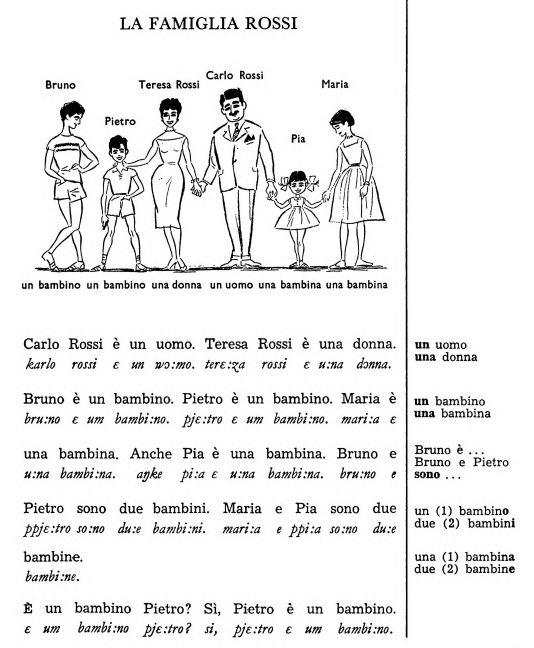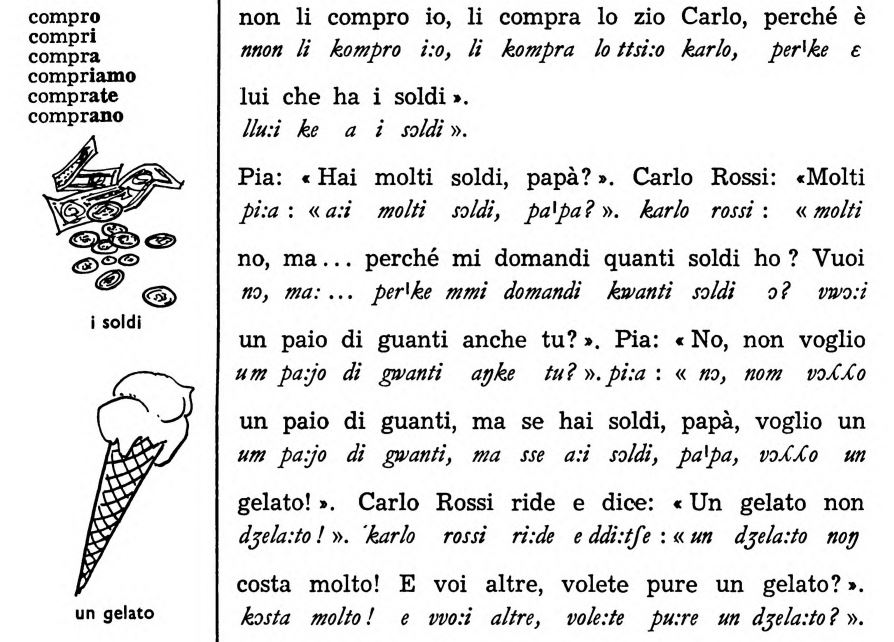In this post I want to talk a little bit about the language learning textbooks developed by the Nature Method Institute (NMI). If you want to learn the story behind this defunct Danish company, go to this link. I am more interested in their “natural method” of teaching languages.
The term “natural method” usually refers to the direct method, that was developed in response to traditional methods like grammar-translation method. You can also research the natural approach method that was developed in the late 1970s and early 1980s. All this natural methods aim to foster a more natural language acquisition.
Since the NMI is defunct, you can actually download their English (English by the Nature Method) , Italian (L’ Italiano secondo il «metodo natura») and French (Le Français par la «méthode nature») books here and here (the second link also has links to similar books that were not published by NMI). The famous Latin book “Lingua Latina per se illustrata” by Hans Henning Ørberg, was initially published by NMI under the title “Lingua Latina secundum naturae rationem explicata“. After NMI became defunct, Ørberg managed to reclaim the rights to his work and he also renamed the book.

In the image above you can see how the Italian book starts the lesson on page 1. You immediately start reading sentences in the target language. The entire book is written in Italian, so no translations are provided. The meaning of words and grammatical concepts is conveyed through images or diagrams. I find it a bit funny that even the preface is written in Italian.

I actually like very much the fact that they included the phonetic transcription under each word and that they used the International Phonetic Alphabet (IPA). This is more important for English learners, so they included the phonetic transcription in each chapter (the English book has 60 chapters). In the Italian book they stop using the phonetic transcription starting with chapter 21 (the book has 50 chapters). My English and French classes would have been much better if the textbooks included lessons that incorporated the IPA phonetics (I finish 9 classes in Romania and I graduated from high school and college in US). I believe that the relevant IPA phonetics can be taught starting with the 5th grade.
The only problem with the phonetic transcriptions is the fact that the NMI books don’t explain them. Normally you would use examples from the native language to explain how the phonetics work. There is also the problem where your native language may lack the phonetics present in the target language. Learning the pronunciation is a very important aspect of language learning, so textbook and dictionary authors should include phonetics and they should explain the phonetics.
The NMI books also seem to excel in the way they handle vocabulary. In the beginning the vocabulary is basic and sentences are repetitive, with only slight variations. As you progress, the vocabulary becomes more complex and the text becomes less repetitive. The diagrams help you to understand vocabulary or grammar concepts like synonyms, antonyms, declension of nouns, conjugation of verbs, pronouns, indefinite articles, word contractions etc.
Even though the NMI books seem to handle the grammar concepts well, you should still have a separate grammar book. Once you reach an intermediary level (B1 or B2), you should probably try to understand the grammar at a deeper level. At the very least, a grammar book allows you to review the grammar concepts much easier since it is structured around grammar concepts. If you want to review a grammar concept using the NMI book you have to remember the chapter or page that dealt with that concept.
In the end, the NMI books should be complemented by other books or resources. Right now, I use Duolingo to learn modern Greek. reverso.net has dictionaries and verb conjugators for many languages. And there are many books that follow different approaches. Probably it is a good idea to try various approaches to see what is the best fit for you.
You can enhance your experience with the NMI books using this Youtube channel. In December 2020 they are still uploading chapter readings from L’ Italiano secondo il «metodo natura» and Le Français par la «méthode nature». It is good to have a native speaker or a very advance non-native speaker show the proper pronunciation.
